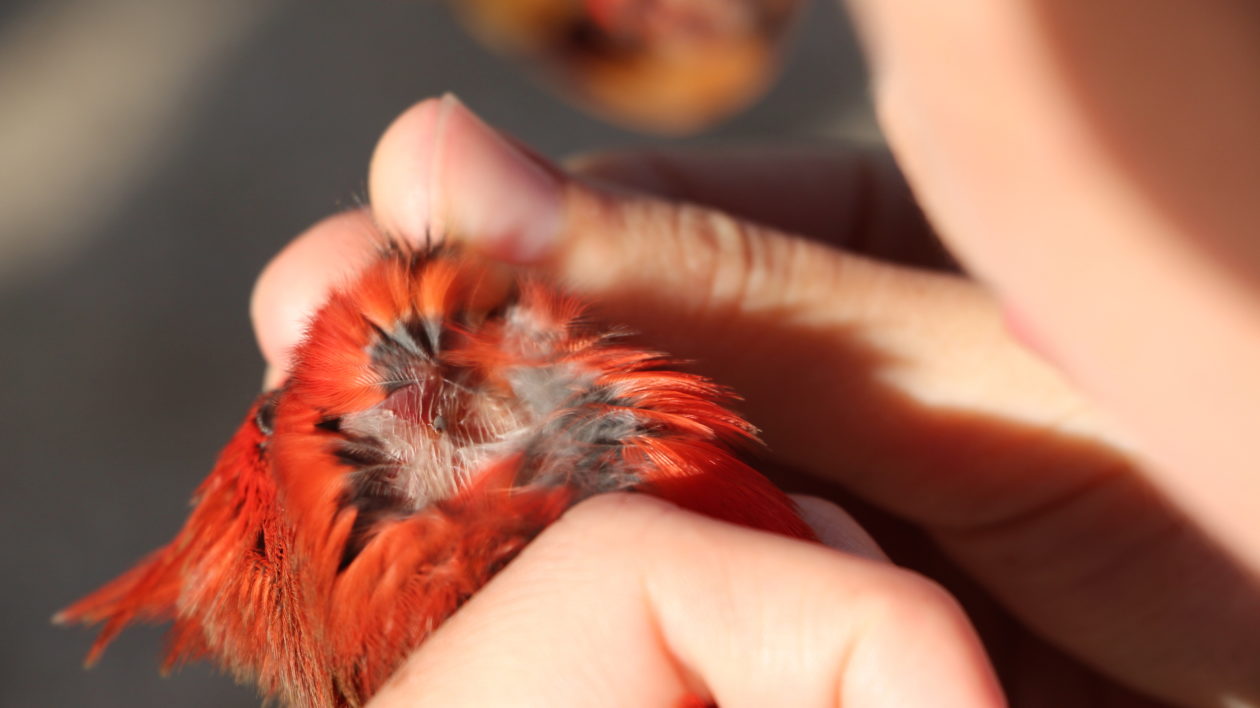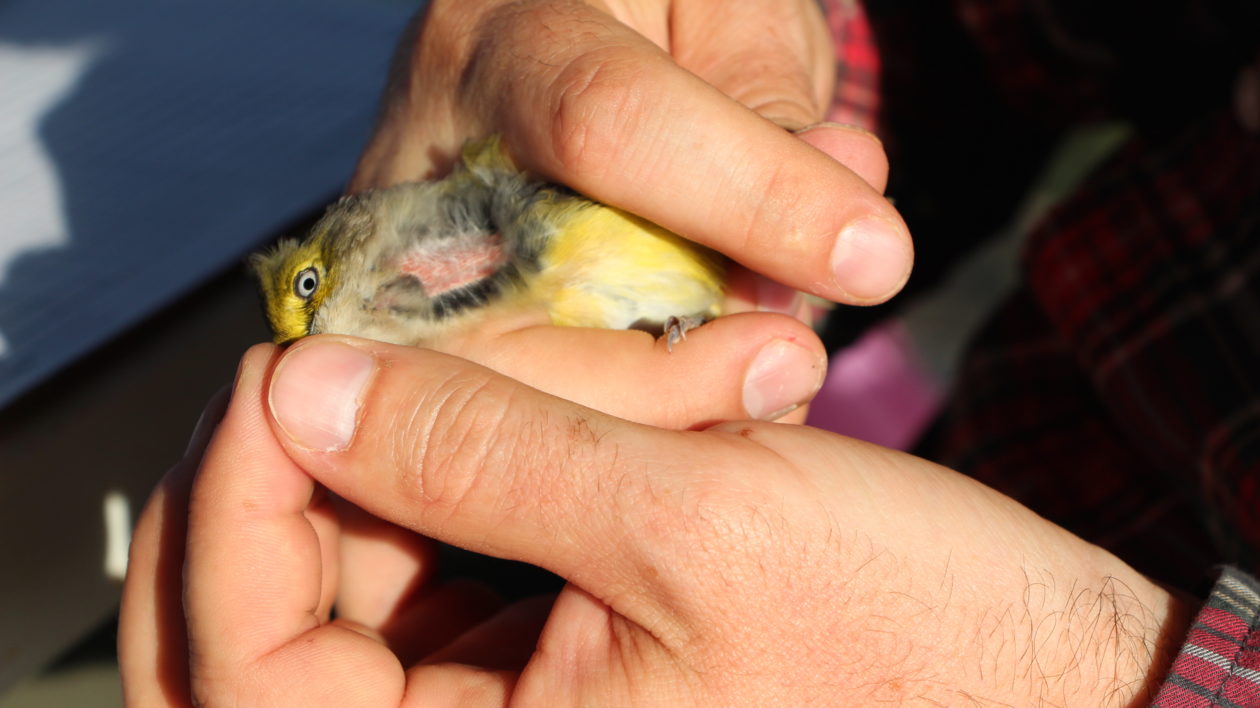An invasion of 19 million ticks. It might sound like the plot of a horror movie, but it’s real, and it happens every spring as migratory songbirds transport ticks — and the pathogens they carry — into the United States.
As covered previously on Cool Green Science, researchers from The Smithsonian Migratory Bird Center (SMBC) and Texas A&M University are trying to figure out just how many ticks and tick-borne pathogens neotropical songbirds are transporting from Central and South America during their annual migration.
And now they have an answer. Their results, recently published in Applied and Environmental Microbiology, reveal that neotropical songbirds are transporting an estimate of more than 19 million non-native ticks species into the country each year.
Hitching a Ride on the Wing
Millions of warblers, vireos, thrushes, and other neotropical songbirds migrate to the U.S. from Central and South America each year. After crossing the Gulf of Mexico in a single exhausting 18-to-24 hour flight, the birds often touch down at the first sight of land to rest and refuel. And that’s when the SMBC banding crew at the Conservancy’s Mad Island Marsh Preserve in Matagorda, Texas gets to work.
Since 2013, the SMBC has searched nearly 4,000 birds caught at this banding station for ticks, plus taken blood samples from any infested birds they find. Sarah Hamer, assistant professor in the department of Veterinary Integrative Biosciences at Texas A&M, then used a combination of morphological traits and DNA analysis to identify each tick down to the species level.
She found that 3.56 percent of the birds were infested with ticks from eight different species, seven of which are not known to be established in the U.S.
“Three percent doesn’t seem that high, but when you think about the billions of migratory birds its actually an incredible amount of exotic ticks coming to the U.S. every year for millennia,” says Emily Cohen, a postdoctoral researcher at SMBC and co-author on the research.
Thirty-six of the 85 bird species caught at the banding station had ticks, and Cohen says that ground-foraging species had higher infestation rates, probably because most ticks search for new hosts close to the ground.
Based on the percentage of infested birds captured at Mad Island, Hamer and Cohen calculated that more than 19 million ticks could enter the U.S. each year via migrant songbirds.

As anyone familiar with Lyme disease knows, where there are ticks there are also tick-borne pathogens.
Seven of the eight tick species found on Mad Island birds are from the Amblyomma genus, which are common carries of Rickettsia species parasites. Twenty-nine percent of these ticks tested positive for Rickettsia species, including Rickettsia parkeri, an emerging cause of spotted fever in humans in the southern U.S.
Although the ticks tested positive for pathogens ⎯ either within the ticks themselves or within their last blood meal ⎯ the birds were not carriers of disease. None of the avian blood samples the banding crew collected tested positive for Rickettsia pathogens or Borrelia burgdorferi, the agent of Lyme disease.
One of Hamer and Cohen’s data points proved especially puzzling: they found a Grey-cheeked Thrush infested with a single tick from the Ixodes genus, which in turn was infested with the pathogen Rickettsia monacensis.
“This was a big surprise,” says Hamer, “because Rickettsia monacensis is the agent of Mediterranean spotted fever illness and has not been found in the Americas before. It just goes to show that we really don’t know the distribution of the pathogens in nature,” says Hamer.

Marching Along the Invasion Pathway
None of the non-native tick species found on the Mad Island birds have established populations in North America ⎯ yet.
“A species invasion isn’t a one-step process,” says Hamer. “There are all these things that need to go right for an invasive species to be an invader and to be successful.” Hamer and Cohen’s work confirms that the first stages of the invasion pathway are already underway for these neotropical ticks: birds are transporting the ticks to the U.S. and the ticks are surviving the journey.
But they’re not persisting, and Hamer suspects that some barrier is preventing the ticks from establishing new populations. Possibilities include the different climate or a lack of host species. Hamer explains that many of these tick species, in their adult stage, strongly prefer to feed on hosts like sloths or anteaters, which aren’t found in North America.
But even if the conditions aren’t quite right, climate change could shift temperatures or host species ranges in the ticks’ favor. “We should be vigilant,” says Hamer, “and we really need to look to nature to find out about potential emerging human or animal health threats.”




What this story tells me is that this is a natural phenomenon. Just as “our” songbirds must leave the temperate U.S. for tropical regions in the fall in order to survive, they then”invade” continental North America every spring. As do the ticks. Apparently, the U.S. mainland’s seasonal climate is hostile to the ticks as well as to the songbirds. However, the songbirds have the option of leaving in the winter. Perhaps the tropical ticks simply freeze. Where I live in Hawaii, birds are believed to be key vectors in transporting the colonizer seeds that resulted in our native flora. Again, a natural phenomenon.
Thank you. .have many co infections with Lyme. .learning ?
How little actually we know about the world around us.
We become absorbed in our daily routines.
And the larger explanatory system passes us by.
Until there is a problem.
Probably just as likely our North American ticks and pathogens are heading south as well during fall migration. The soft-bodied tick that carries the bacteria for relapsing tick fever is hosted by rodents in the intermountain west but it will bite and drop off of its non-rodent victim leaving the bacteria to infect.
Birds have been migrating ever since they evolved from dinosaurs. Ticks have probably also been around for almost that long. What makes this so much more of a threat now?
I cannot think of a worse piece of information than that ticks and pathogens are being carried by song birds. The next thing we know our dysfunctional Congress will make a bill to kill all of songbirds I hope you don’t publish this outside of your membership.
Very interesting. It won’t be long now before the same timid souls who want to ban Syrian refugee children from settling in the U.S. lobby for drones to patrol our coasts and shoot down all migratory tick-carrying birds. After all, a threat is a threat.
And we haven’t even come to realistic terms with Borrelia Burgdorferi yet. This is the fastest growing and most prevalent of vector borne diseases, yet most doctors are able to recognize it even in its most obvious manifestation, let alone effectively treat it. I have complex and persisting Lyme disease (along with another tick-borne disease, Babesiosis), and to tell the truth, I am not terribly worried about the danger of these more exotic ticks. We need to pay more attention to the ones we know are established and which yearly cause illness of more people and the devastation of more lives, while our government and most of our medical institutions act as if nothing is happening.
How I wish similar investigations are carried out between Europe and Africa where there also established migratory routes and birds. The southern migration to Africa during the European winters and northern migrations during the summer periods in Europe. I would not be surprised to find even more alarming results epidemiologically from such studies